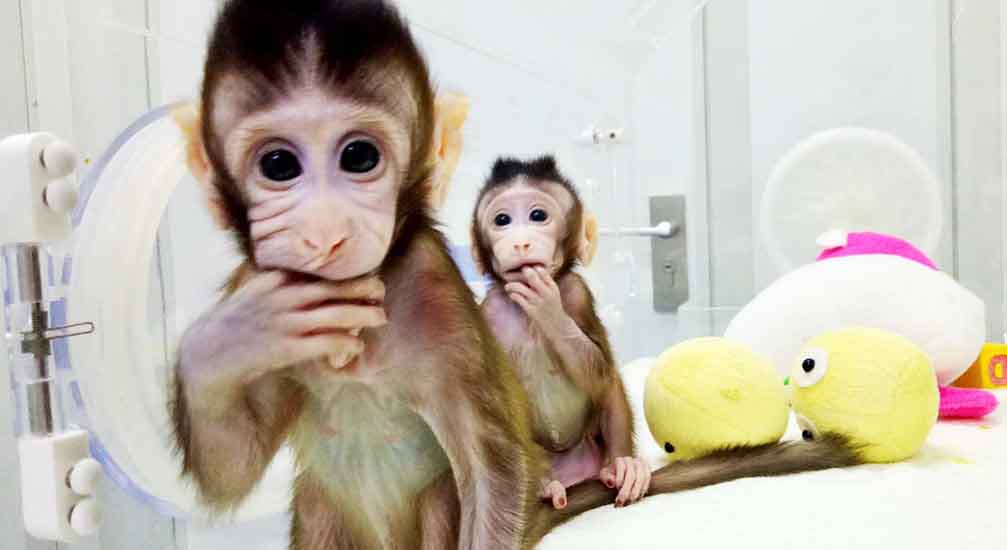For the first time, scientists say they created cloned primates using the same complicated cloning technique that made Dolly the sheep in 1996.
Shanghai scientists created two genetically identical and adorable long-tailed macaques. The monkeys are named Hua Hua and Zhong Zhong, a version of the Chinese adjective Zhonghua which means the "Chinese nation" or "people."
The research was published in the journal Cell on Wednesday.
These two are not the first primates to be cloned. Scientists in 1999 created Tetra, a rhesus monkey, but used what researchers consider a simpler cloning method that produces a more limited number of off spring. In Tetra's case, scientists split the embryos, much like what happens naturally when identical twins develop.
In the case of Hua Hua and Zhong Zhong, researchers used modern technology developed only in the last couple of years to enhance the technique used to clone Dolly, which is called somatic cell transfer, or SCNT. This is where scientists reconstruct an unfertilized egg. The researchers remove the egg's nucleus -- the part of the cell that contains most of its genetic information-- and replace it with the nucleus from another cell. It's then stimulated to develop into an embryo, which is transplanted into a surrogate mother. That same cell cluster can make more genetically matched animals.
When scientists made Dolly the sheep, years after she was born they used the same cell cluster to make four other sheep clones.

















